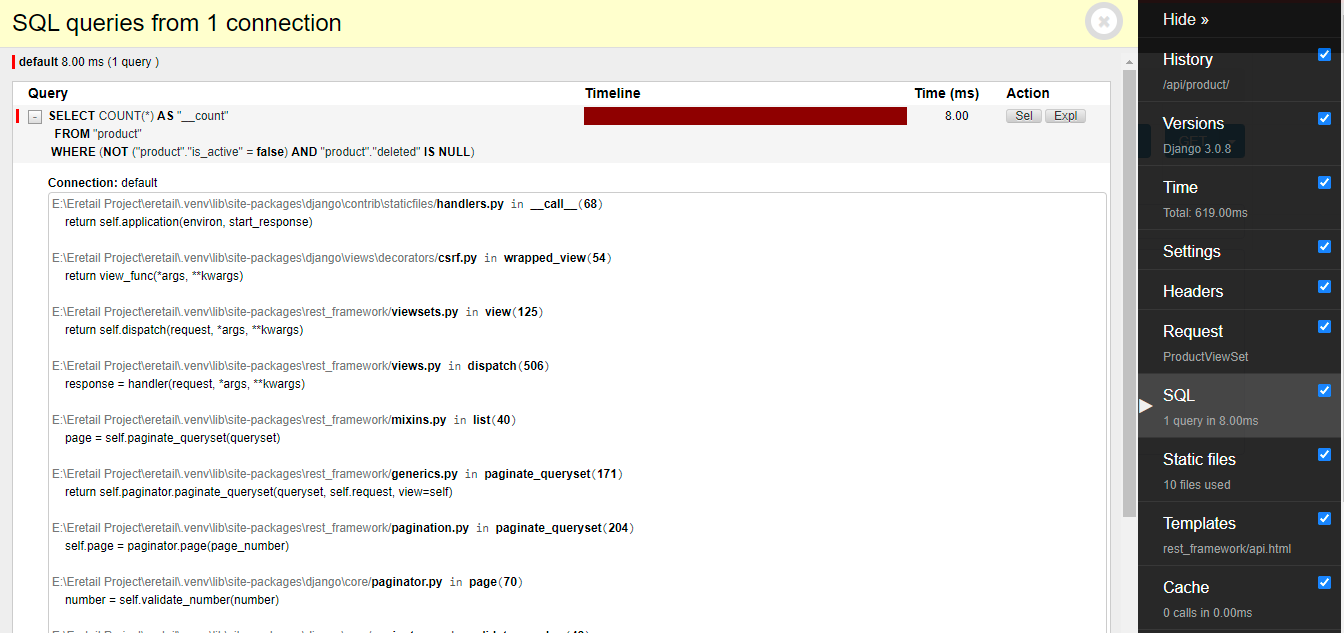How to debug your django application using django-debug-toolbar
Pardeep
Jan 20, 2022
The Django Debug Toolbar allows you to view all SQL queries performed while rendering view and you can also view stacktrace for any of them.
6 Steps needs to be configured for the Debug Toolbar to be fully functional.
1. Install the package
$ python -m pip install django-debug-toolbar
2. Check for Prerequisites
First, ensure that django.contrib.staticfiles is in your INSTALLED_APPS setting, and configured properly:
INSTALLED_APPS = [
# ...
"django.contrib.staticfiles",
# ...
]
STATIC_URL = "static/"
Second, ensure that your TEMPLATES setting contains a DjangoTemplates backend whose APP_DIRS options is set to True:
TEMPLATES = [
{
"BACKEND": "django.template.backends.django.DjangoTemplates",
"APP_DIRS": True,
# ...
}
]
3. Install the App
Add debug_toolbar to your INSTALLED_APPS setting:
INSTALLED_APPS = [
# ...
"debug_toolbar",
# ...
]
4. Add the URLs
Add django-debug-toolbar’s URLs to your project’s URLconf:
from django.urls import include, path
urlpatterns = [
# ...
path('__debug__/', include('debug_toolbar.urls')),
]
5. Add the Middleware
The Debug Toolbar is mostly implemented in a middleware. Add it to your MIDDLEWARE setting:
MIDDLEWARE = [
# ...
"debug_toolbar.middleware.DebugToolbarMiddleware",
# ...
]
6. Configure Internal IPs
The Debug Toolbar is shown only if your IP address is listed in Django’s INTERNAL_IPSsetting.
INTERNAL_IPS = [
# ...
"127.0.0.1",
# ...
]
After performing all these steps, you will be able to see a debug toolbar in your django application when it is running.
Sample application with debug toolbar implemented

Github link - https://github.com/robhudson/django-debug-toolbar/
Official docs - https://django-debug-toolbar.readthedocs.io/en/latest/